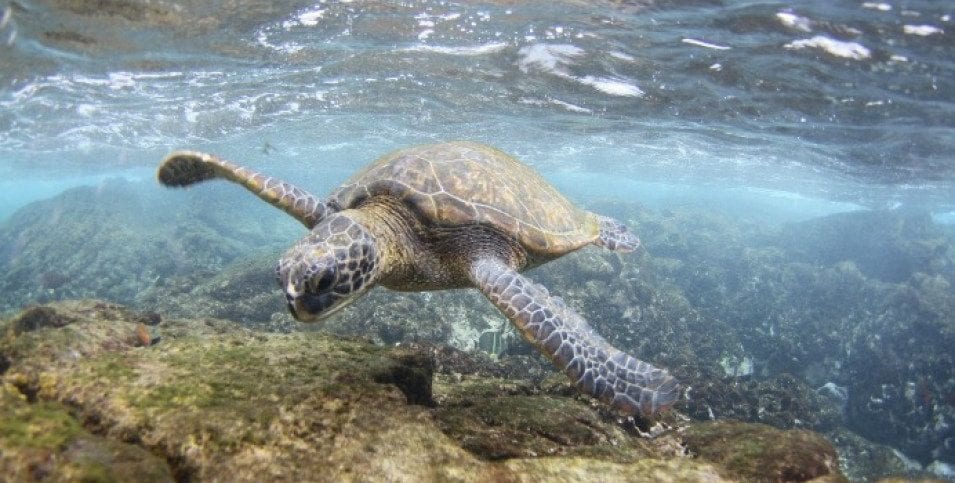By Nancy Marr
On Jan. 4 of this year, U.S. Interior Secretary Ryan Zinke announced that the federal government is developing a five-year plan to lease ocean lands in federal offshore areas all along our shorelines, including two leases on the North Atlantic region of the Outer Continental Shelf to companies that would drill for gas and oil. (Each state along the Atlantic coast owns the waters 3 nautical miles from the shore at mean low tide; they have jurisdiction to decide whether or not to lease their territory for oil and gas.)
The U.S. Department of the Interior’s Bureau of Ocean Energy Management (BOEM) has been considering the many possible effects of offshore drilling compared with the estimated potential of the gas and oil drilling. Research by BOEM will consider a wide range of issues: physical considerations; biological considerations; social, economic and cultural considerations; and alternatives and mitigation measures. BOEM estimates that, at current national consumption rates, the support of undiscovered economically recoverable offshore oil and gas in the Atlantic, Pacific and Gulf Coast of Florida would only meet domestic oil demand for two years and gas demand for just over one year.
Opposition has been growing
• Both Republican and Democratic governors in every state where offshore drilling doesn’t already exist (except Maine) have expressed opposition to opening their coastlines to the oil and gas industry. In case efforts to exempt their states are unsuccessful, lawmakers in California, New York and New Jersey are pushing legislation that would make new offshore drilling in federal waters as difficult as possible.
• Resistance to the plan has been expressed by at least 130 organizations along the Eastern Seaboard, including groups that support conservation, wildlife, clean water and political action.
• The risk of oil spills, which could destroy the environment for a wide area, as it has in the Gulf, is a major cause of opposition.
• Seismic air guns that fire intense blasts of compressed air every 10 to 12 seconds 24 hours a day for months on end will disrupt and displace marine life, including whales, which rely on sound to find food and mates, sea turtles and many fish and shellfish species, including those of commercial importance.
• Drilling and processing infrastructure along the shoreline and in nearby areas will limit tourist and recreational activities.
• Tourism, with fishing and other industries that depend on clean, oil-free water and beaches, supports nearly 320,000 jobs, which could be lost, with $5.6 billion from the tourism economy of Long Island.
• The fossil fuel industries create five times fewer jobs than are created by the clean energy sector.
• This proposal will slow our nation’s progress toward solving the climate change problem. The Fourth National Climate Assessment, mandated by Congress and released in November 2018, concluded that coastal communities and the ecosystems that support them are increasingly threatened by the impacts of climate change.
What can be done
Although dissent was expressed at many public hearings, it is likely that the Department of the Interior intends to carry out its offshore drilling plan. The League of Women Voters urges towns and villages that will be affected by drilling to pass memorializing resolutions to submit to the BOEM and its local elected officials. Riverhead, Southold, Shelter Island and Southampton towns in Suffolk County have already done so. (See a sample resolution at https://www.lwv-suffolkcounty.org/TakeAction.html.)
Representative Lee Zeldin (R-Shirley) of the 1st Congressional District has opposed the drilling plan at local meetings. Individuals should write, call or email him (30 Oak Street, Patchogue, NY 11772; 631-289-1097; www.zeldin.house.gov/contact) to express their concerns about the need to protect our local economies and the environment.
Write to Gov. Andrew Cuomo (D), U.S. senators Chuck Schumer (D) and Kirsten Gillibrand (D) and your New York State senators and assemblypersons (visit https://www.lwv-suffolkcounty.org/DirectoryOfPublicOfficials.html for full contact details).
A revised plan, with a new period of public comment, may be released this month. If implemented, it will affect all of us. We can protest, as individuals. We should each also contact our town and village governments to ask them to adopt memorializing resolutions in opposition to the drilling in order to protect our oceans, our fishing industry, our tourism and our quality of life. Specific requests for action by many constituents are always more effective with elected officials … Act now!
Nancy Marr is first vice president of the League of Women Voters of Suffolk County, a nonprofit, nonpartisan organization that encourages the informed and active participation of citizens in government and influences public policy through education and advocacy. For more information, call 631-862-6860.







